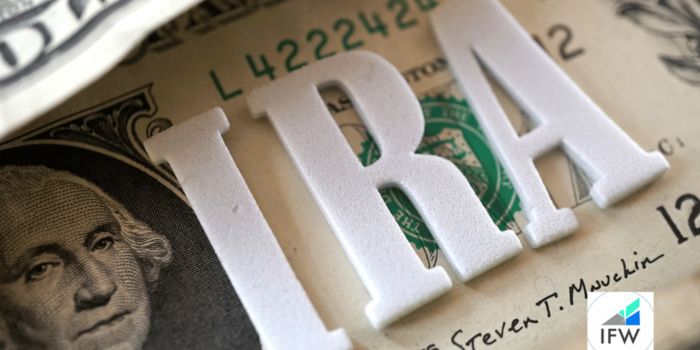Are you self-employed and wondering about the best retirement plan options for you? Look no further! In this blog post, we’ll explore the various self-employed retirement plans available, from Traditional and Roth IRAs to Solo 401(k)s, SEP IRAs, SIMPLE IRAs, and self-employed IRA options like defined benefit plans. You’ll learn about the unique features, tax benefits, and contribution limits of each plan to help you make an informed decision and secure your financial future.
Key Takeaways
- Maximize your retirement savings and secure your future by understanding the best self-employed IRA options.
- Enjoy tax benefits, flexibility, and high contribution limits and employer contributions with Solo 401(k)s or SEP IRAs.
- Consult a professional financial advisor to choose the right retirement plan provider for you!
Understanding Self-Employed IRA Options

Navigating the world of retirement savings can be overwhelming, but knowing your options is the first step toward a secure future. Self-employed individuals have a plethora of self-employed retirement plans to choose from, such as:
- Traditional and Roth IRAs
- Solo 401(k)s
- SEP IRAs
- SIMPLE IRAs
- Defined benefit plans
Each of these retirement account plans offers distinct tax benefits and contribution limits that can help you maximize your retirement savings.
So let’s dive deeper into the different types of IRAs and discover which one is best suited for you.
Traditional IRA vs. Roth IRA
When it comes to IRAs for self-employed individuals, the two primary options are Traditional and Roth IRAs. Both plans offer exciting tax benefits, but they differ in how these benefits are realized. Traditional IRAs provide a tax deduction on contributions, while Roth IRAs grant tax-free withdrawals in retirement.
It’s important to check if you are eligible to contribute to a Roth IRA, as there are income limits set by the IRS. Ultimately, the choice between a Traditional and a Roth IRA depends on your individual financial situation and future goals. A Traditional IRA may be more suitable if you want to lower your taxable income now, while a Roth IRA is ideal if you expect your tax rate to be higher in retirement.
Contribution Limits
The contribution limits for Traditional and Roth IRAs are currently set at $6,500 for individuals up to age 50 and $7,500 for those 50 or older. These limits allow you to steadily grow your retirement savings over time.
However, if you’re looking for higher contribution limits, you may want to consider other retirement plans such as SEP IRAs or Solo 401(k)s. SEP IRAs, in particular, offer extremely generous contribution limits. For 2023, you can contribute either 100% of your compensation or a maximum of $66,000, whichever is more beneficial for you.
This high-contribution flexibility makes SEP IRAs an attractive option for self-employed individuals seeking to maximize their retirement savings.
Solo 401(k) as an Alternative

Another great alternative retirement plan for self-employed individuals is the Solo 401(k). This plan offers the unique opportunity to contribute as both an employer and an employee, allowing for even higher contributions than an IRA. If you can maintain at least $250,000 in your Solo 401(k) account, you’ll be able to take advantage of these higher contribution limits.
Let’s explore the employer and employee contribution structure and tax benefits of Solo 401(k)s in more detail.
Employer and Employee Contributions
What sets the Solo 401(k) apart from other retirement plans is its distinctive employer and employee contribution structure. As a self-employed individual, you can contribute to your Solo 401(k) as both an employer and an employee. In 2023, you can take advantage of the generous contribution limits of up to $66,000 for those under 50 and $73,500 for those 50 and over. This allows you to maximize your retirement savings and secure your financial future.
If you’re married and your spouse works for your business, they can also contribute to a Solo 401(k) through salary deferrals, up to 100% of their compensation. This flexibility makes Solo 401(k) an appealing option for self-employed individuals and their spouses to optimize their retirement savings together.
Tax Benefits and Flexibility
Solo 401(k)s offer attractive tax benefits and flexibility for self-employed individuals. You have the exciting option to decide whether you want to contribute pre-tax or post-tax dollars to your Solo 401(k). Contributing post-taxed income has several tax benefits, including being tax deductible. You can enjoy tax deductions in retirement, similar to a Roth IRA account.
In addition to the tax benefits, Solo 401(k)s are also relatively low maintenance, making them an excellent choice for busy self-employed individuals. By combining the high contribution limits, tax benefits, and flexibility, Solo 401(k)s provide a powerful retirement savings option for self-employed individuals.
SEP IRA: A High-Contribution Option

If you’re a self-employed individual or small business owner looking for an alternative to Traditional and Roth IRAs, the SEP IRA might be the perfect solution for you. Offering extremely generous contribution limits and tax advantages, SEP IRAs are an ideal choice for those seeking to maximize their retirement savings.
Let’s delve into the key features and benefits of SEP IRAs, as well as eligibility requirements and contribution rules.
Key Features and Benefits
SEP IRAs offer several advantages, including:
- Tax-advantaged contributions
- Higher contribution limits than Traditional and Roth IRAs
- Employer contributions
- The opportunity to invest and grow funds tax-deferred until retirement
In 2023, you can contribute up to 25% of your compensation to your SEP IRA. The maximum contribution is $66,000. This makes SEP IRAs an attractive option for self-employed individuals looking to save a significant amount for their retirement.
Additionally, setting up a SEP IRA is easy and convenient. Many online brokers allow you to open a SEP IRA. This process is similar to opening a Traditional or Roth IRA, with just a few extra documents needed. These factors make SEP IRAs a powerful retirement savings tool for self-employed individuals.
Eligible Employees and Contributions
To be eligible for a SEP IRA, an employee must be at least 21 years old and have worked for the company in three of the last five years. Employers have the privilege to make contributions to a SEP IRA, not employees. In 2023, the contribution limit for a SEP IRA is up to 25% of a worker’s pay or $66,000, whichever is lower. This offers a fantastic opportunity for both self-employed individuals and small business owners to save for their retirement.
It’s important to note that employers must contribute an equal percentage of their salary to each eligible employee’s SEP IRA. This ensures that all employees, including the self-employed individual, benefit equally from the retirement plan contributions.
SIMPLE IRA: Ideal for Small Businesses

For small businesses with up to 100 employees, the SIMPLE IRA is an ideal retirement plan option. Also known as a savings incentive match plan, SIMPLE IRAs offer a straightforward solution for small business owners and self-employed individuals to save for retirement. In addition to SIMPLE IRAs, a simplified employee pension is another option to consider for retirement planning.
Let’s take a closer look at the process of setting up a SIMPLE IRA and the contribution rules for both employers and employees.
Plan Setup and Contributions
Setting up a SIMPLE IRA is surprisingly easy. Here are the steps:
- The employer must select a financial institution to serve as the plan administrator.
- The employer must provide the necessary details to set up the plan.
- The employer must give employees the required information about the plan.
Employers have the option to contribute up to 3% of an employee’s compensation, or they can choose a fixed contribution of 2% for every eligible employee. Making these matching contributions will help boost retirement savings.
Employees can contribute up to $15,500 to a SIMPLE IRA in 2023, allowing them to steadily grow their retirement savings over time. By offering a SIMPLE IRA, small business owners can provide their employees with a valuable retirement savings option while also benefiting from the same plan themselves.
Withdrawal Rules and Penalties
It’s essential to be aware of the withdrawal rules and penalties associated with SIMPLE IRAs. Early withdrawals made before age 59 1/2 are taxed as income and may be subject to a 10% penalty. Furthermore, if a withdrawal is made within the first two years of participation, the penalty is increased to 25%.
To maximize your retirement savings, it’s crucial to understand the tax implications of withdrawals from a SIMPLE IRA and avoid making early withdrawals if possible. By doing so, you can ensure that your retirement savings continue to grow and provide you with a secure financial future.
Defined Benefit Plans: Creating Your Own Pension

If you’re looking for a retirement plan that provides a secure and reliable stream of income during your retirement years, a defined benefit plan might be the ideal choice for you. These plans offer guaranteed, pre-determined benefits for employees at retirement, protection from market volatility, and tax advantages.
Let’s explore the advantages and disadvantages of defined benefit plans, as well as the funding commitments required to make them work for self-employed individuals.
Advantages and Disadvantages
Defined benefit plans offer several benefits, including a guaranteed retirement income, protection from market volatility, tax advantages, and the potential for enhanced employee retention. However, these plans also come with potential drawbacks, such as costly setup, necessary funding commitments, and limited investment options.
While the advantages of defined benefit plans may be attractive to some self-employed individuals, it’s essential to weigh the potential drawbacks carefully before committing to this type of retirement plan. By considering your specific financial situation and long-term goals, you can determine whether a defined benefit plan is the right fit for you.
Funding Commitments
One of the most significant aspects of defined benefit plans is the funding commitments required to ensure a secure retirement for employees. Employers must make regular contributions to the plan to meet the promised benefits, and the funding ratio of the plan indicates the level of funding and whether the plan is on track.
For self-employed individuals, funding commitments for defined benefit plans can have a powerful effect on retirement savings, as they are the ones who need to ensure the plan is sufficiently funded. By carefully considering the funding commitments required and balancing them with other financial priorities, self-employed individuals can determine if a defined benefit plan is the right choice for their retirement savings strategy.
Choosing the Right Retirement Plan Provider

Selecting the right retirement plan provider is a crucial step in ensuring a comfortable retirement. It’s essential to consider factors such as:
- How much you can save for retirement each year
- How much you can realistically afford to set aside each year
- Whether you have any employees other than your spouse
- How much time and money you are willing to invest in managing the retirement plan
By seeking professional advice from a financial advisor, tax advisor, or certified financial planner, you can make an informed decision about the best retirement plan for your specific circumstances.
Get Comprehensive Financial Education from the Institute of Financial Wellness
Financial wellness is essential for making informed decisions about your finances and planning for the future. The Institute of Financial Wellness provides comprehensive financial education, resources, and services to help people take charge of their financial well-being.
By seeking professional advice when choosing a self-employed retirement plan, you can:
- Ensure that the plan is tailored to your specific needs and goals
- Understand the tax implications of different retirement plans
- Maximize your savings for a secure future.
Full Summary
Self-employed individuals have a wide range of retirement plan options to choose from, including Traditional and Roth IRAs, Solo 401(k)s, SEP IRAs, SIMPLE IRAs, and defined benefit plans. Each plan offers unique features, tax benefits, and contribution limits to help you build a secure and comfortable retirement. By seeking professional advice and carefully considering your specific financial situation and goals, you can confidently choose the best retirement plan for your needs and enjoy a well-deserved retirement.
Frequently Asked Questions
What type of IRA is best for the self-employed?
For self-employed individuals, a SEP IRA is the best option for their retirement savings, allowing for contribution limits of up to 25% of compensation or net self-employment earnings with a $330,000 limit.
Traditional or Roth IRAs may be suitable as well, but a SEP IRA will provide the most benefits.
Can a self-employed person have an IRA?
Yes, a self-employed person can have an IRA. They can open and fund a traditional IRA as long as they are under 7012 and use it whether or not they have employees.
Additionally, they may also be eligible for a SIMPLE IRA, which allows both employees and employers to contribute up to $15,500 in 2023.
Who qualifies for a SEP IRA?
SEP IRA eligibility requires employees to be at least 21 years old, have worked in the company for at least 3 of the past 5 years, and have earned a minimum of $750 in the current tax year.
Additionally, employers can set less restrictive eligibility rules if desired.
What are the main differences between a Traditional IRA and a Roth IRA?
Traditional IRAs offer an upfront tax break on contributions, while Roth IRAs provide tax-free withdrawals in retirement, making them a great long-term savings vehicle.
This makes them an attractive option for those looking to save for retirement. They offer a variety of benefits, including tax-deferred growth, tax-free withdrawals, and the ability to pass on assets to heirs. Additionally, contributions to a Roth IRA can be made.
How do contribution limits for SEP IRAs compare to those for Traditional and Roth IRAs?
Contributing to a SEP IRA is more advantageous than contributing to a Traditional or Roth IRA since the contribution limit is significantly higher, with up to 25% of your compensation or $66,000 available for contribution, whichever is lower.
SEP IRAs offer a much higher contribution limit than Traditional or Roth IRAs, allowing you to contribute up to 25% of your compensation or $66,000, whichever is lower. This makes them a great option for those looking to save more for retirement.




